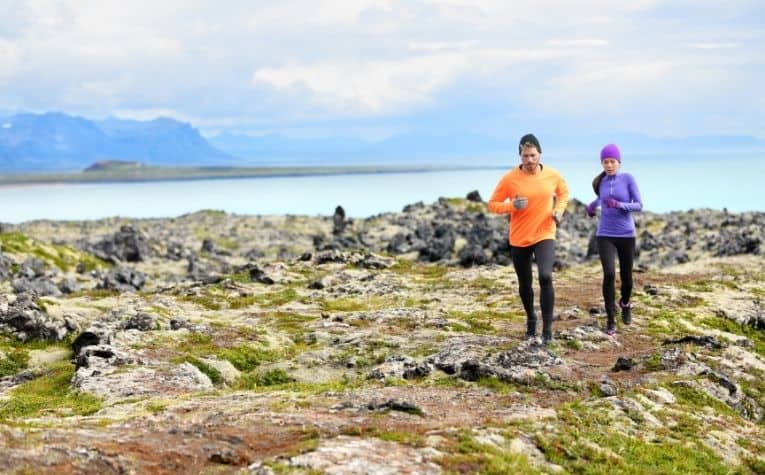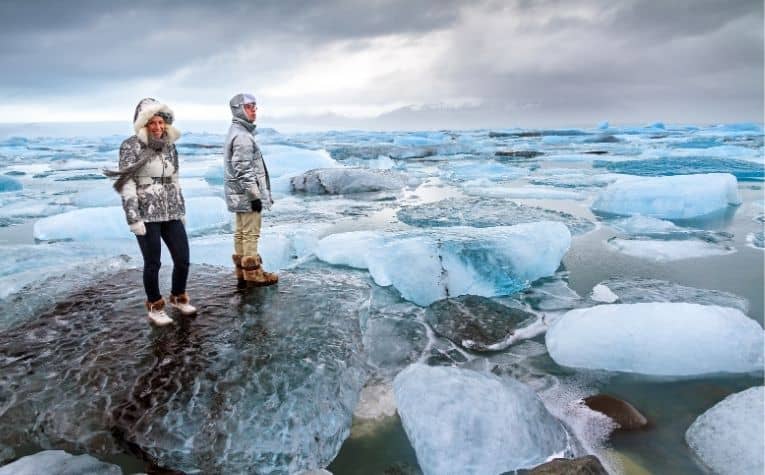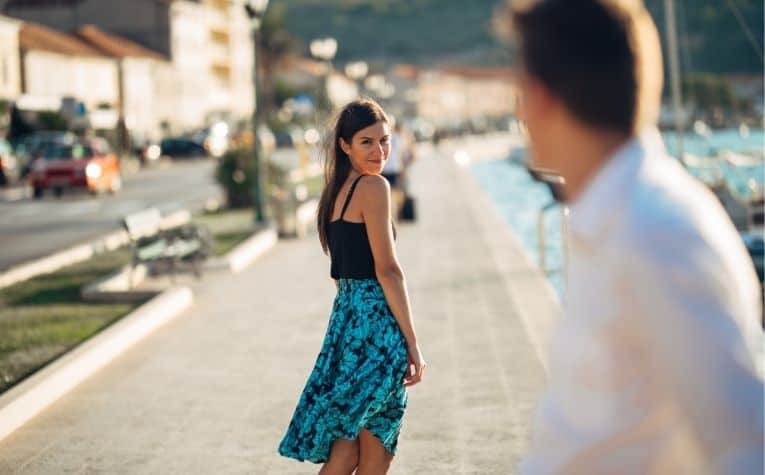Because Iceland is a small country with a relatively small population, it is easy to assume that everyone would know each other.
Many people think, it’s there aren’t many people there and it’s not a big island, so maybe everyone knows each other, like in a small town. But is this true?
Although Island is a small country, all Icelanders do not know each other. It is more common for people in a town of a few hundred, or maybe even a few thousand, to know each other. Yet over 300,000 people live on the island nation.
But just because not everyone knows everyone that doesn’t mean relationships aren’t uniquely different than elsewhere in the world.
In light of Iceland’s population, the Smithsonian Magazine answered the question this way: “That’s enough people that not everyone knows each other, but few enough to mean that two Icelanders who are dating might actually be cousins.” [1]
The people of Iceland, the relationships they have, and their shared history is a fascinating story. Many non-Icelanders are intrigued by the native and non-native people that contribute to the culture of the island.
Also, see Wondering Why Icelandic People Look Asian? Here’s why to learn more.

Where do Icelanders come from?
Scandinavian history and Icelandic history intersected during the Middle Ages.
Sometime between 874 to 930 A.D, Vikings from Denmark and Norway—who were determined and skillful explorers—ventured to Iceland for the purposes of discovery, plunder, and possible settlement.
Fast forward to modern times, and approximately 60% of the 330,000 residents of Iceland are descendants of Scandinavia.
About 34% of Icelanders have Celtic ancestry, which can include a broad mixture of European ancestry, especially British and Irish influences. [2]
The term “Scandinavia” is an informal description of the region of northern Europe.
The term always includes the countries of Norway, Denmark, and Sweden, yet when used more broadly today, it includes countries like Iceland and Finland.
There is some historical evidence to suggest that Christian monks from the region of Scotland arrived in Iceland before the Scandinavian Vikings.
If this is true, then Celtic cultural influences may have beat Scandinavian cultural influences to the island.
It’s also possible that the Scots fled to the island when the Vikings encroached upon their homeland.
The Vikings’ raids instilled fear in many places in Europe during the Middle Ages.
Some fought to defend their land while others fled to nearby places seeking refuge.
Like in many other places around the world, there is some mystery as to the early residents of Iceland.
People groups in the Middle Ages didn’t keep historical records like is common today.
In fact, the Vikings kept no historical records at all. Many European records were destroyed by fire or water or succumbed to time in some other way.
What is known is that modern Icelanders have a shared history, some going back almost a millennium.
So while not Icelanders know each other by name, residents on the island may not be total complete strangers.
Traveling to Iceland and wondering about safety? See Is Reykjavik Safe at Night? to learn more.

Understanding Iceland’s population
Conventionally, Iceland has about 13 cities or towns. Only one—Reykjavik—has over 100,000 people.
And there are only two others with populations over 20,000—Kopavogur and Hafnarfjoedur.
While people in other places in the world may marvel at the small population of Iceland, they can perhaps understand that there are still too many people for everyone to know each other.
The chart below shows the population spread in Iceland’s cities and towns. [3]
Cities and towns in Iceland
| Reykjavik | 118,918 |
| Kopavogur | 31,719 |
| Hafnarfjoerdur | 26,808 |
| Akureyri | 17,693 |
| Gardabaer | 11,421 |
| Mosfellsbaer | 8,651 |
| Akranes | 6,612 |
| Selfoss | 6,510 |
| Isafjoerdur | 2,624 |
| Saudarkrokur | 2,575 |
| Egilsstadir | 2,303 |
| Borgarnes | 1,759 |
| Keflavik | unclear |
Even though not all Icelanders know each other, most people are only a few individuals removed from another person.
In other words, it would not be difficult to engage with a stranger because the chances are high that that person is a friend of a friend or colleague or family member.
The Influence of the Internet
While this has always been the case to some degree, it has increased significantly with the establishment of the internet in the last few decades.
Before the internet, people were mostly confined to engaging with new people when they were outdoors.
At certain times of the year, however, people spend a significant amount of time indoors because of the weather.
While the internet has helped Icelanders connect to each other even more, the aspect of the internet that people use the most is now social media.
Many Icelanders consistently use Facebook, Instagram, Twitter, and other platforms, just like people elsewhere in the world do.
Social media has connected Icelanders to one another like never before and has also connected to the rest of the world like never before.
Though Icelanders don’t all know each other, the average resident may not be more than one or two people removed from another island on social media.
Also, see Can You Get to Iceland Without Flying? to learn more.

Generational differences
New generations of Icelanders are changing some of the island’s norms in a way that enables them to meet and know more people.
In previous eras, Icelandic families tended to stay in one place for a long period of time.
This meant that their relationships with others around them were strong. However, their ability to interact with new people was limited.
Younger generations of Icelanders may be changing some of these norms.
Part of the change is due to younger generations being more engaged with the internet and the relationships that develop on social media, as mentioned above.
Yet there is also evidence to suggest that younger people are changing jobs, which sometimes involves relocation, at a higher rate than their parents and grandparents.
Geographical and professional changes have led people to build new relationships in their new settings.
Also, see When Can You See the Northern Lights in Iceland? to learn more.
Islendingabok
Genetically, if modern-day Icelanders trace their heritage back centuries or even a millennium, they will likely find similarities with other residents of their island home.
Now, and perhaps more so in the future, DNA testing may fill in the gaps of information that is currently missing in historical records.
Furthermore, DNA testing may prove to be more reliable than the time periods for which historical documents survive.
Most likely, science and history will be partners in telling the story of Iceland’s civilized origins.
Even though not all Icelanders know each other since there is a high probability that many residents are somehow related, a website called Islendingbok—Book of Icelanders—was created to help people map their heritage.
As would be expected, there is more information about most centuries, but there is some older data as well:
“Íslendingabók is a database that contains information about the ancestry of almost all Icelanders for whom there are sources. There you can find over 900,000 individuals from the settlement to the present day.
About 95% of all Icelanders who have lived since the Census of 1703 were registered in this country can be found in Íslendingabók. Individuals can also be found all the way back to settlement if they are mentioned in sources.” [4]
Icelandic neurologist Kári Stefánsson created the website in 1997 for the purpose of giving other Icelanders access to information about their heritage and relatives. [5]
Stefånsson worked with developer Fridrik Skulason to research census records, church records, and other archives.
Though the information is weighted to the last few centuries, there is a historical reason for that. Stefånsson claims that 95 percent of all Icelanders have lived within the past three centuries. [6]
The Islendingabok App
Consistent with the ways that the younger generations of Icelanders are changing some of the traditional norms on the island, in 2013, students from the University of Iceland`s School of Engineering and Natural Sciences created the Íslendingabók App to celebrate the 10th anniversary of the website.
This app allows users to touch their phones together to determine whether or not they share a common ancestor.
It’s yet another way Icelanders today and using modern technology to connect to the past and one another today.
Icelanders are hopeful that more information can be gleaned through discovering their heritage, like insights into health challenges, which could inform preventative medicine for future generations.
Knowledge plus sensitivity
Though not all Icelanders know each other, it can be conclusively confirmed that relationships, both past and present, are an important value to residents.
Generally, Icelanders want to know where they come from and who they live near.
Such relationships encourage them in their cultural identity and provide them with the joy that comes from knowing other people.
Iceland is geographically distant from most of the world, but the island nation is well connected to the 21st century and to one another.
References:
[1] Source
[2] Source
[3] Source
[4] Source
[5] Source
